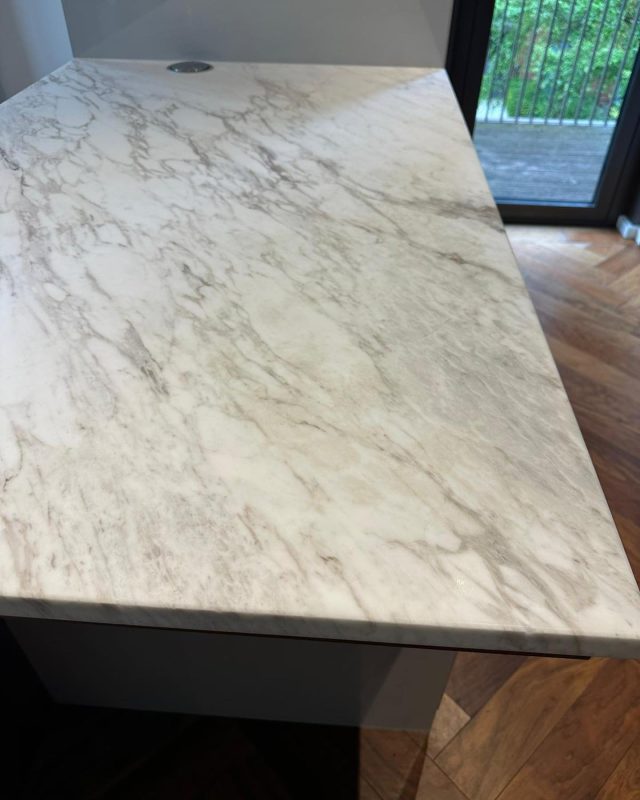Last Updated on October 17, 2025 by Royal Stone Care
Marble has graced homes and other structures for hundreds of years, with its designs evolving over the ages. Today, it’s used seamlessly across a broad line-up of interior (and exterior) settings. Here, we take a look at how this gorgeous natural stone has changed over time, and remained important to modern home design.
Ancient times
Marble was initially seen as a symbol of wealth, and was typically used in temples, statues and key public buildings. The only homes in which it tended to appear were those of the elite.
For example, marble entered the villas and kitchens of rich Romans, who already appreciated its cool temperature, resistance to heat and ease of cleaning. The material was also used in bathing areas of the homes of the well-off.
The Renaissance
Between the fourteenth and seventeenth centuries, there was a shift towards using marble for practical purposes in kitchens rather than purely as decoration. It showed up in food preparation areas, particularly in cities such as Rome, Florence and Venice. At the same time, dedicated pastry kitchens began to spring up in palaces and grand homes. Built-in marble worktops became popular, as did the notion of permanent marble fixtures, albeit mainly among the upper classes.
The Victorian era
The Industrial Revolution brought with it new materials, technology and methods which revolutionised kitchens and interior design as functional areas became more elegant. By the end of the 1800s, affluent middle-class homes, particularly in towns and cities, began to have marble worktops. And kitchens started to have different areas for prep, cooking and cleaning. People also used marble in larders, pantries and laundry rooms.
The influence of Art Deco (roughly 1919-1939)
Marble, with its glossy finish, captured the glamorous feel of Art Deco and its bold, geometric patterns. (The movement was also renowned for combining contemporary, industrial concepts with high-end materials.)
After World War Two
As kitchen designs became more practical, marble quartz worktops grew in popularity. At the same time, so did granite and quartz generally.
The modern period
In the late twentieth century, with the development of modern sealants, marble once again became a practical choice in worktops. Meanwhile, enhanced fabrication and cutting have allowed us to create custom-made counters with incredible accuracy. Additionally, pre-cut and modular units have made installation easier.
Focal points of design
Today, marble worktops are more than merely functional. They’ve become standout features and focal points in bathrooms as well as kitchens. Bespoke models complement the clean lines of modern minimalism and can create a sleek look with smart lighting, built-in appliances and cabinets without handles.
Finally, another technique nowadays is bookmatching, in which two neighbouring marble slabs are sited to mirror each other in a way that looks like an open book, enhancing aesthetic appeal while adding a symmetrical pattern.
Call Royal Stone Care
In summary, marble worktops have become more practical yet sleeker over the ages. And this delightful natural stone keeps changing to adapt to modern-day lifestyles.
At Royal Stone Care, we’re at the forefront of all the latest techniques when it comes to marble cleaning, marble restoration and marble repair. So we’ve adapted over the years, too. Get in touch to discuss the marble in your home or business wherever you are in the UK. Contact us now for a free, no-obligation quote.

